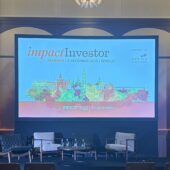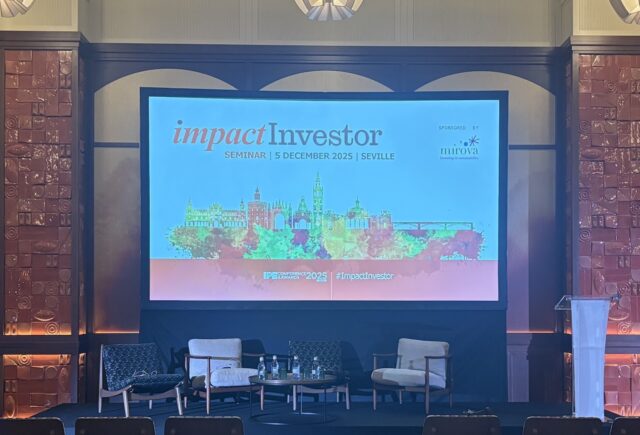One-third of food is wasted across the value chain every year, enough to feed two billion people. Impact Investor caught up with three investment specialists to understand the challenge and the potential investment solutions.

In brief
- According to the UN’s Food and Agricultural Organization (FAO), 1.3bn tonnes of food is wasted annually.
- Other estimates indicate this figure can be even higher, as much as 2.5bn tonnes.
- Studies show the food waste crisis is accelerating, making the need for developing solutions to create more efficient food supply chains increasingly urgent.
- Impact investors can play a major role in addressing the problem by backing companies developing innovative solutions to tackle food waste.
The United Nations’ Food and Agriculture Organization (FAO) has estimated one-third of food is either wasted or lost annually, equal to about 1.3bn tonnes and enough to feed as many as two billion people each year.

A more recent report from the WWF and supermarket chain Tesco, suggests this figure could be even higher, as much as 2.5bn tonnes, if you incorporate the 1.2bn tonnes of food lost on farms during and after harvest, equivalent to about 15.3% of food produced. This is on top of the waste in supply chains, at retail and consumer level, which the report said provided “a clearer picture of the scale of food loss and waste from farm to fork”.
But according to Martin Gjølme, partner at Stockholm-based impact investor Summa Equity, the problem is likely getting worse.
“Whilst hard to get exhaustive data over time, there are studies that demonstrate how food waste has accelerated, for example, there are mentions of the US tripling its food waste over 50 years,” he says.
Sophie Pickering, investment manager for Pymwymic, an Amsterdam-based impact investment cooperative which manages the Healthy Food Systems Impact Fund II, agrees.
“Globally, one-third of food is either wasted or lost and new data is showing the problem is getting worse. If we stopped wasting all that food, we’d save enough to feed 2 billion people,” she says. “It is estimated that some 25% of post-harvest waste and loss could be saved through interventions in the value chain.”
SDG 12
UN Sustainable Development Goal (SDG) 12 – responsible consumption and production – aims to tackle the issue of food waste with the goal of cutting per capita global food waste at the retail and consumer level in half, whilst reducing food losses along production and supply chains by 2030.

Pickering says the inclusion of food waste in SDG 12 had resulted in two key market developments, the first being the development of stringent regulations across Europe, with member states required to report on food waste levels annually and provide incentives for collecting and redistributing unsold food, as part of the Farm to Fork strategy, and the second was the development of voluntary market initiatives such as Samen tegen Verspilling (Together Against Food Waste foundation) in the Netherlands or the Food Loss and Waste 2030 Champions initiative in the US, in which she says “food companies, research institutes and financial institutions commit to and work together towards the 2030 food waste reduction goal”.
Food waste is also said to cost the economy $940bn per year. Against a backdrop of increasing world hunger in which the number of undernourished people in the world increased to 828 million in 2022, of whom 349 million face acute food insecurity, today’s food system is not just inefficient but a significant social justice concern says Mridul Pareek, analyst at the European Circular Bioeconomy Fund (ECBF).
“By saving even half of the nearly 2.5 billion tonnes of food wasted every year, several UN SDGs and development targets can be met, particularly sustainable consumption and production (SDG 12) and zero hunger (SDG 2),” he says.
The climate cost
The carbon footprint of food waste should also not be underestimated. According to the Intergovernmental Panel on Climate Change, around 8-10% of the world’s greenhouse gas emissions relate to food waste. If food waste were a country, it would be the third biggest emitter of greenhouse gases, behind the US and China.
“Organisation such as the World Resources Institute highlight reducing food waste as the single most impactful lever if our food system is to reach the 2 degree-target,” says Gjølme.
And yet when it comes to climate finance, very little investment is directed at the food system. Pickering points to a whitepaper published by the World Economic Forum last month looking at the role of finance in sustainable food systems, which unveiled what she called “a worrying and significant gap in the amount of climate financing going towards the food system – only 3%”.
“With adequate and appropriate financing, food and agriculture systems could drive 20% of the emissions reductions needed to reach 2050 climate goals and generate $4.5 trillion in new market opportunities each year, but to do this we need to increase the investment in food systems by 15x,” she adds.
Investing to reduce food waste
Pickering, Pareek and Gjølme all agree that impact investors have an important role to play in addressing the problem of food waste, highlighting several opportunities for investment.
“Fortunately, the issue of food waste is solvable. Impact investors can play a crucial role in reducing food waste by directing funding towards prevention and upcycling solutions that aim to reduce wastage on a large scale,” says Pareek, who explains that the ECBF investment team has identified several innovations in agricultural inputs such as bio fungicides, inventory optimisation, upcycling of organic waste, fermentation for clean-label ingredients, insect-based animal feed technology, waste-reducing logistics, surplus food management, and shelf-life extending packaging.

One of the fund’s portfolio holdings is PeelPioneers, a company processing orange peels, which make up around 50% of the orange fruit after juicing, into ingredients for the food industry, another is insect-based food ingredients producer Protix.
“By investing in these solutions, we can win big not only in the overall environmental score, such as GHG emission reductions, but also in financial returns for our investors,” says Pareek.
Gjølme talks about the company’s investment in Holdbart, a Norwegian supplier of surplus food items through Summa Equity Fund II. He explains how the company salvages excess products which suppliers are unable to sell to conventional grocery chains and retail outlets.
“Products that are discontinued, overstocked, nearing their expiry date, or have old or faulty labels can be sold in Holdbart’s physical stores or on their website, and are offered at up to a 90% discount compared to their original prices,” he says.
According to Gjølme, Holdbart’s business model has enabled it to support its suppliers in reducing food waste by offering an attractive distribution outlet for products they would otherwise have thrown away, whilst at the same time assisting the consumer in reducing their grocery spend by an average of 50% per basket.
“This is especially relevant in today’s world, where rising interest rates and slimmer wallets are driving consumers to explore smarter ways to reduce their grocery spend,” says Gjølme. “We are proud to have invested in Holdbart in 2021, which in 2022 saved 11.3k tonnes of food, averting the equivalent of 30,487 tonnes of CO2e.”
Pickering believes demand for what she calls ‘prevention technologies’ that can address food waste and loss is growing, with the global market anticipated to be valued at $63bn for 2022, with an estimated compound annual growth rate of 6.4% over 2022-2032.
One of the latest investments in Pymwymic’s Healthy Food Systems Impact Fund II is OneThird, a Dutch company whose technology predicts the shelf life of fresh produce to enable interventions that lead to reductions in food loss using, for example, dynamic rerouting, which ensures food is still fresh when it arrives at its destination, and data-based dynamic day-coding, to ensure printing of accurate expiry dates.
“By reducing food loss and waste, OneThird is directly contributing to food security and availability, ensuring produce ends up fresh on the shelves or is repurposed in time,” she adds.






